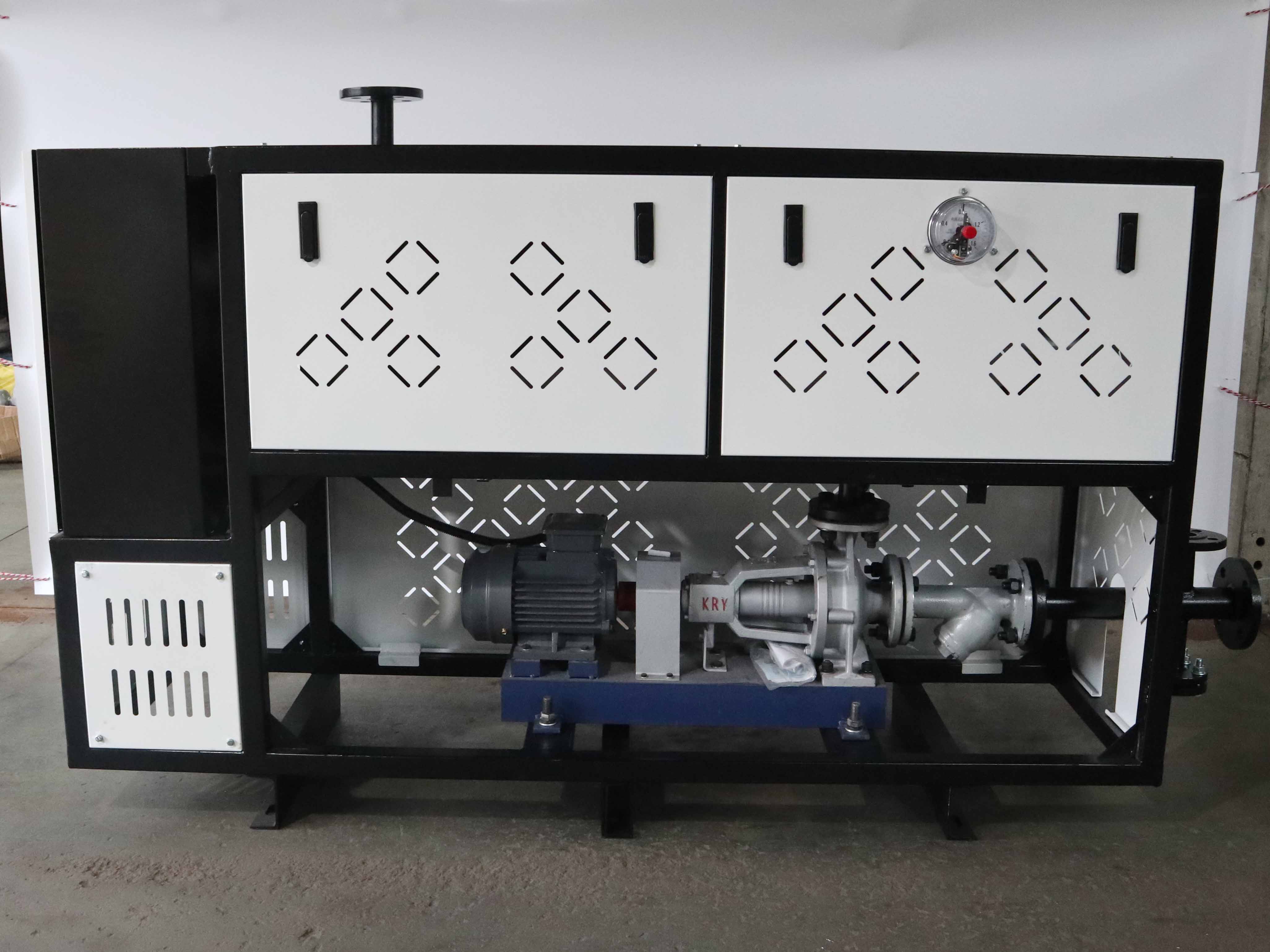What are the necessary conditions for designing a thermal oil furnace? Here is a brief introduction to you:
1 Design heat load. There should be a certain margin between the heat load and the effective heat load of the thermal oil furnace, and this margin is generally 10% to 15%.
2 Design temperature. The design temperature of the heat transfer oil furnace is determined by its use temperature, and should be designed with reference to the relevant provisions of GB9222 "Calculation of the original strength of the water tube boiler".
3 Design pressure. The design pressure of the heat transfer oil should be slightly higher than the maximum working pressure, and should not be less than the opening pressure of the safety valve. The design pressure of gas phase furnace is 1.2 ~1.5 times the working pressure; The design pressure of liquid phase furnace should be 1.05~1.2 times the pressure; The pressure difference between the inlet and outlet of the heat transfer oil in the liquid phase furnace should be greater than 0.15MPa (1.5kgf/cm2).
4 Temperature of the heat transfer oil inlet and outlet. The design should be from the point of view of both economy and safety, to design a suitable temperature difference for the operation of the thermal oil in the system, and the temperature difference should be less than 30℃.

5 Flow rate of the heat transfer oil in the pipe. Design a certain flow rate of thermal oil in the pipe, but not because of local overheating and coking, the general radiation section of the pipe using 2~4m/s flow rate, convection section of the pipe using 1.5~2.5m /s flow rate. The determination of this parameter should also take into account the resistance of hot oil in the pipe and the factors that ensure the turbulent flow of hot oil in the pipe. The flow rate is higher when the pipe diameter is larger. The pipe diameter is small, the flow rate should be lower.
6 Average thermal strength of furnace tube. The design requires the flat soaking strength of the furnace tube to be within a certain range, so that thethermal oil furnace can not be overheated and the heat transfer area of the furnace tube can be fully utilized. The average thermal strength of the furnace tube in general radiation section is 0.084~0.167GJ/(m2.h), and the average thermal strength of the furnace tube in six sections is 0.033~0.047GJ/(m2.h).
7 Exhaust smoke temperature. According to the working temperature of the heat transfer oil in operation, the difference between the smoke exhaust temperature and the heat transfer oil temperature is best controlled at 80~120℃, and the smoke exhaust temperature is suitable at 350~400℃, so that the convection heating surface is not too large. In order to make full use of heat energy, the heat of these higher smoke exhaust temperatures excluded by the thermal oil furnace should be set up a waste heat recovery device to recover and reuse it, especially the larger thermal oil furnace should be considered and paid attention to.
8 All pipes and accessories in contact with thermal oil are strictly prohibited to be made of non-ferrous metals and cast iron. Flanges and valves should be cast steel valves with nominal pressure of 2.5MPa (about 25kgf/cm2) and above. Seals should be made of high temperature and oil resistant materials. Use a biphenyl mixture of heat transfer oil, use a mortise or concave flange connection.
9 The thermal oil furnace must be equipped with a low drain valve, and it is required to discharge the material to ensure that no residual liquid is left.
Post time: Jun-12-2024




